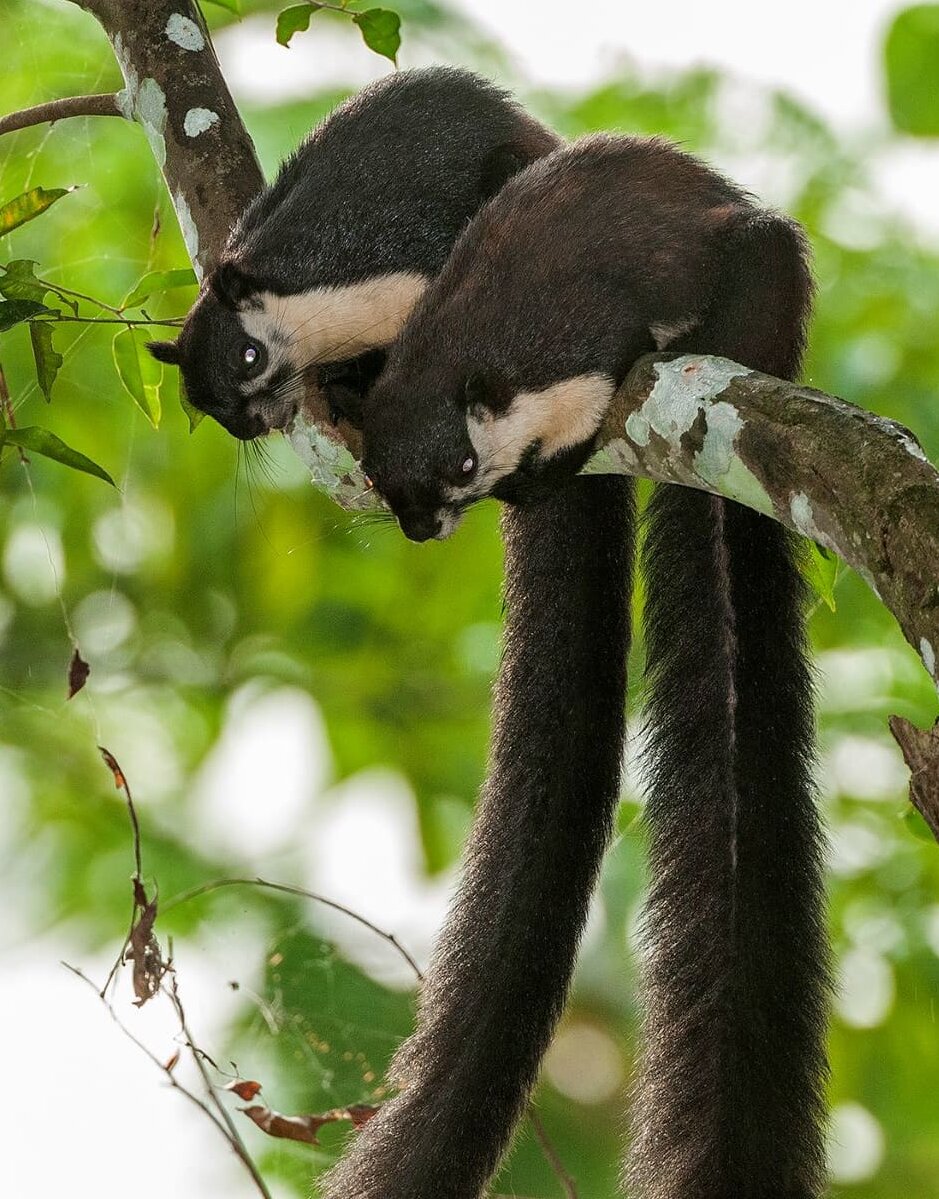Biodiversity & Environment
Malayan Giant Squirrel
- 04 Dec 2020
- 4 min read
Why in News
Recently, the Zoological Survey of India (ZSI), in a first-of-its-kind study, has projected that numbers of the Malayan Giant Squirrel could decline by 90% in India by 2050, and it could be extinct by then if urgent steps are not taken.
- Headquartered at Kolkata, ZSI is a subordinate organisation of the Ministry of Environment, Forest and Climate Change, established in 1916.
- It is a national centre for faunistic survey and exploration of the resources leading to the advancement of knowledge on the exceptionally rich faunal diversity of the country.
Key Points
- Scientific Name: Ratufa bicolor.
- Features:
- It is one of the world’s largest squirrel species that has a dark upper body, pale under parts, and a long, bushy tail.
- Unlike the nocturnal flying squirrels, giant squirrels are diurnal (active during the day), but arboreal (tree-dwelling) and herbivorous like the flying squirrels.
- India is home to three giant squirrel species and the other two are Indian Giant Squirrel and Grizzled Giant Squirrel which are found in peninsular India.
- Habitat:
- It is found mostly in evergreen and semi-evergreen forests, from plains to hills at elevations of 50 m to 1,500 m above sea level.
- Globally it is distributed through Southern China, Thailand, Laos, Vietnam, Burma, the Malayan Peninsula, Sumatra, and Java.
- In India, is found in the forests of Northeast and is currently found in parts of West Bengal, Sikkim, Assam, Arunachal Pradesh, Meghalaya, and Nagaland.
- Of the roughly 1.84 lakh sq km of the squirrel’s range in Asia, about 8.5% is in India.
- Significance:
- It is considered to be a forest health indicator species.
- An indicator species provides information on the overall condition of the ecosystem and of other species in that ecosystem. They reflect the quality and changes in environmental conditions as well as aspects of community composition.
- It is considered to be a forest health indicator species.
- Threats:
- According to the study, the squirrel and its habitat are under threat from deforestation, fragmentation of forests, crop cultivation and over-harvesting of food, illegal trade in wildlife, and hunting for consumption.
- Slash-and-burn jhum cultivation in many areas of the Northeast contribute to destruction of its habitat.
- Destruction of its habitat could restrict the squirrel to only southern Sikkim and North Bengal by 2050.
- Only 43.38% of the squirrel’s original habitat in India is now favourable to it and by 2050, the favourable zone could shrink to 2.94% of the area the species was meant to inhabit.
- The population of the squirrel in India declined by 30% over the last two decades.
- According to the study, the squirrel and its habitat are under threat from deforestation, fragmentation of forests, crop cultivation and over-harvesting of food, illegal trade in wildlife, and hunting for consumption.
- Conservation Status:
- IUCN Red List: Near Threatened.
- CITES: Appendix II.
- Wildlife Protection Act, 1972: Schedule I.




